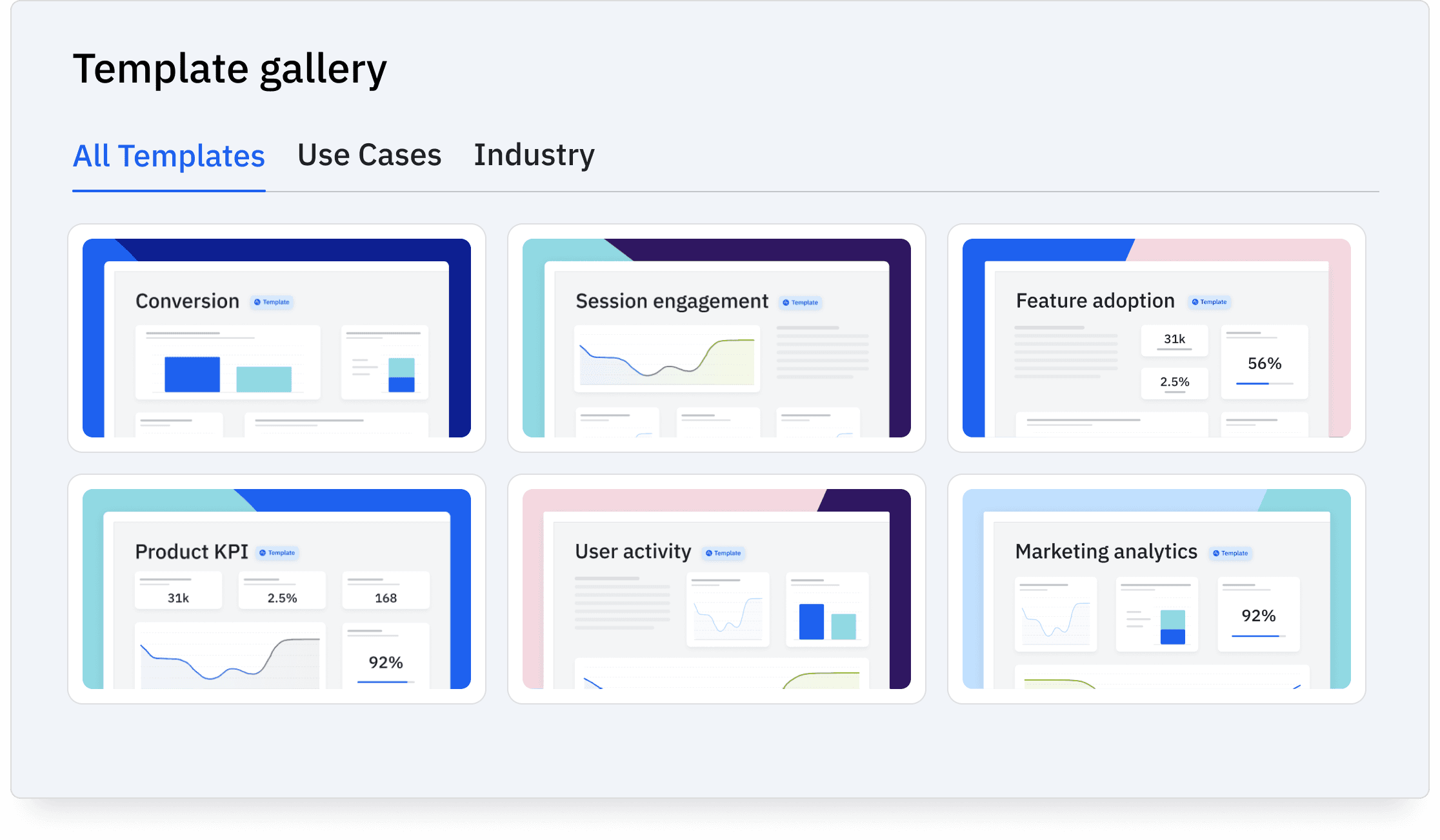How Amplitude Uses Amplitude to Help Customers Get Value Faster
Learn how our growth team used the Amplitude platform to implement changes to onboarding and setup, guiding customers to experience value faster.
At Amplitude, we believe in constantly iterating on our product. We use behavioral data and customer insights to build a product that helps customers solve problems. As the product manager leading our growth team, I often focus on the first moments a new customer interacts with Amplitude.
Our data and customer research revealed that many new and prospective customers struggle with a key question: What does Amplitude actually do? There are many possible Amplitude use cases, but customers weren’t clear on how Amplitude would help them drive specific decisions for their product.
We wanted to help our audience understand Amplitude better and make it easier for them to start getting value, so we made several changes to our website and onboarding process. And, of course, we used insights from Amplitude’s Digital Analytics Platform to inform our improvements. In this post, we’re sharing three of the changes we implemented.
Key takeaways
- Showing customers immediate Amplitude value is key to helping them justify investing engineering resources in setting up their data.
- Industry benchmark data helps product teams answer product performance questions and get a taste of the insights they’ll glean from Amplitude.
- Customizing our sign-up flow and product demo to show customers relevant content helps customers experience value upfront.
- Simplifying the setup process by guiding customers on what to track and how to instrument it means customers can start using Amplitude in a shorter amount of time.
1. Showcase value upfront
Amplitude helps democratize data so everyone in an organization can access the insights they need, regardless of how technical they are. But setting up data tracking often requires an engineer (unless you’re connecting to an existing data source).
In many companies, engineers are a scarce resource, so it’s important to show the value of Amplitude to help make the business case for it. We added two types of content to our site to demonstrate that value.
Industry benchmark data
We decided to add industry benchmarking data to our website to provide value upfront and show the kinds of questions Amplitude will help you answer.
We found that one of the main things new customers want to know is how their business compares to competitors in their industry and region. The benchmarks give customers that crucial information. For product teams, these comparisons help inform whether to double down on improving a product area or move on to something new.
Customer stories and personalization
We also wanted to show people what they could do with Amplitude during sign-up. But our customers’ companies and their needs aren’t all the same. They:
- Are different sizes
- Operate in a variety of industries
- Have different levels of analytics experience
To tackle this, we started collecting more information about customers’ analytics maturity level, company, and industry during sign-up. We use this data to create customized onboarding experiences that more closely match the needs and expectations of each customer.

Questions in Amplitude’s sign-up
During the sign-up flow, we also added customer stories that showcase the kinds of problems Amplitude solves, tailored to what is most relevant to each customer.
2. Improve our demo product
We are trying to make it easier for customers to try out the product on their own, and we knew the demo product needed improving. Before, people would land in the Amplitude demo and not know what to do next. They were left staring at the dashboard with no immediate next steps.
We started by auditing our existing public demo. The product used to work as a sandbox where anyone could add any event. Now, we’ve locked down the content you can see in the demo, so it only includes relevant and clearly named events. We’ve also curated content that promotes learning about Amplitude’s capabilities.
The second improvement we made to address the “blank page feeling” customers had in the demo was to add industry-specific templates. We ask new customers about their industry in the sign-up flow, then show them highly relevant examples based on their answers.

Amplitude’s starter templates
3. Guide data setup
When we looked at our onboarding funnel, we saw that the biggest drop-off was between when an organization signs up and when they first send their data to Amplitude. We heard from customers that figuring out an instrumentation plan and deciding what to track isn’t easy if they're unfamiliar with event-based analytics. Through research and experimentation, we found that being prescriptive and telling people what to track helps them get set up.
We added new functionality like CSV uploads and Tag Manager templates to make it easier for non-technical customers to send data to Amplitude. For technical customers, we improved our software development kits (SDKs) to make them easier to use.
Industry recommended events
We also decided to make our product setup simpler so people can start to get value from Amplitude sooner. One way we did that was by recommending events to track. When customers land in Amplitude, we tell them the most important events to track based on the industry they selected during onboarding.
For example, if you choose B2B SaaS, we recommend that you track events like ‘Page Viewed,’ ‘Demo Viewed,’ and ‘Sales Contacted’ as a starting point. If you have the technical expertise, you can implement tracking on those events. If not, you can immediately send them with implementation instructions to an engineer within your company.
Default event tracking
Our software development kits (SDKs) were the next update we made to simplify setup. We hypothesized that there are a few basic events that everyone wants to track—such as page views and form submissions.
We added default event tracking to our SDKs, so you have some events set up out of the box. When we tested releasing this feature, companies were much more likely to activate with default events than without.
Migration tooling
We’re also improving the setup process for organizations with existing data sources to help them get value quickly. These migrations can be done by non-engineers.
For example, Google Tag Manager is typically the number one source of Google Analytics (GA) data. We built low- to no-code migration tools like a Google Tag Manager template to enable customers to send their GA data to Amplitude.
It’s your turn
Our improvements came from understanding our customers deeply and meeting them where they are in their analytics journey. If you want to learn more about how the Amplitude Growth team thinks about getting customers to value faster, watch this webinar.
If you haven’t experienced our new onboarding flow, check it out and let us know what you think.

Weston Clarke
Former Director, Product Management, Amplitude
Weston is a former product manager at Amplitude with a background in computer science, consulting, and product. He started his career in digital strategy consulting at Accenture, helped build UberEats in its early days, launched buy-side revenue products at Redfin, and most recently, is defining the digital analytics category at Amplitude. In his free time, you can find Weston cycling, skiing, and getting involved in SF's startup community.
More from Weston




